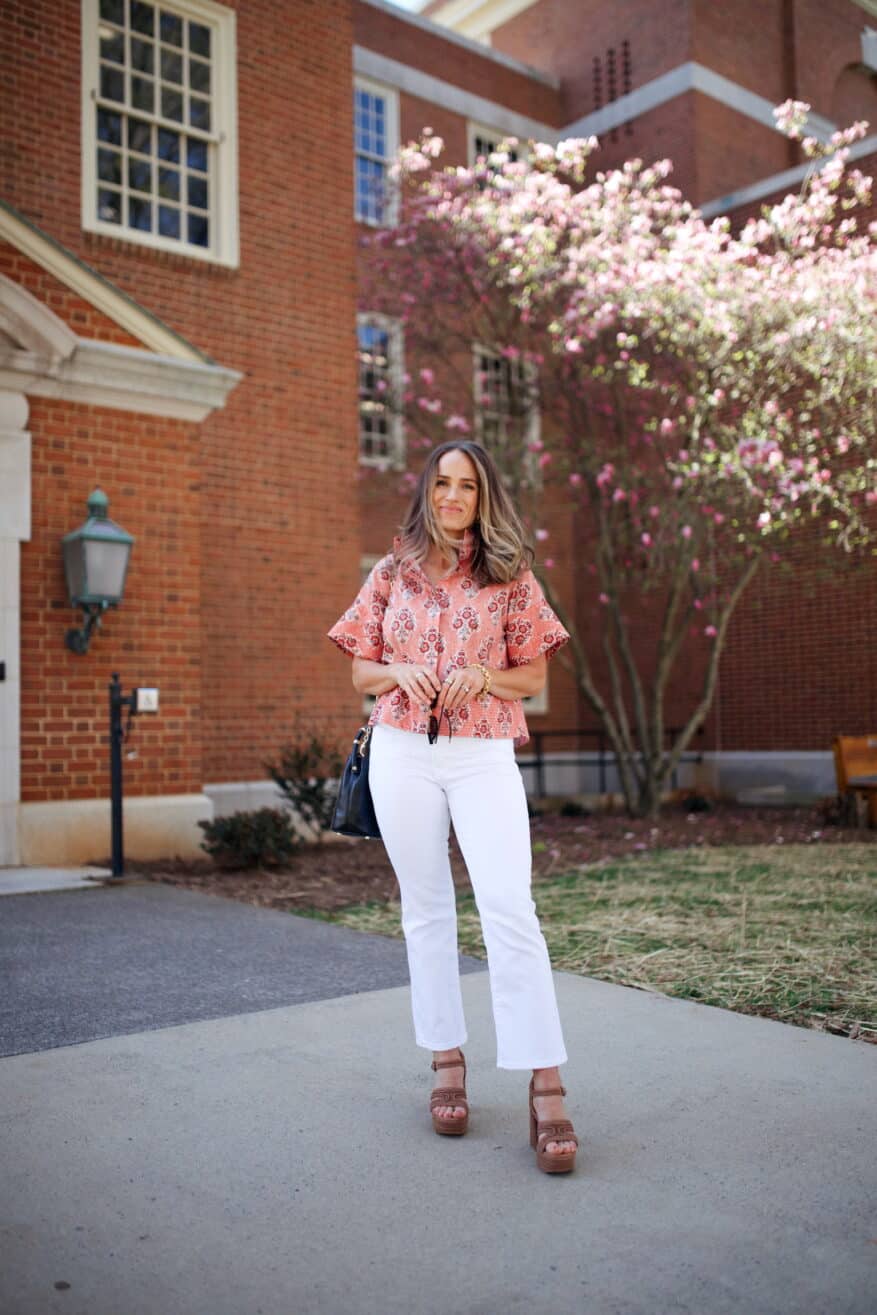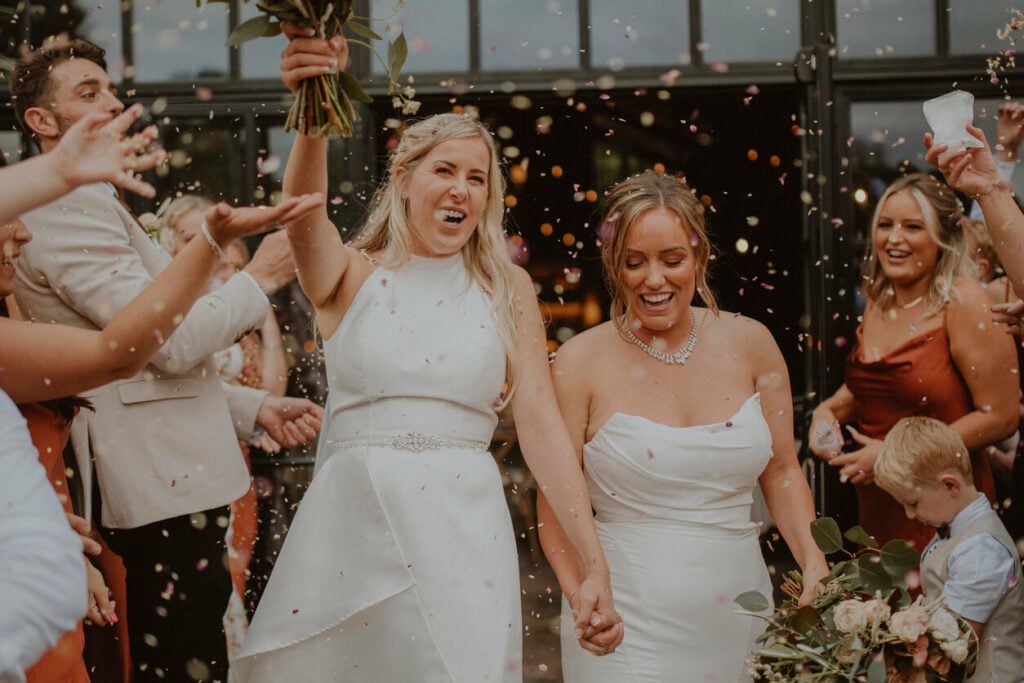A few months ago, I was sent a hair oil to try and it sat in my new-products-bin for months since I wasn’t really sure what I was supposed to... The post Why I’m a Hair Oil Addict appeared first on TeriLyn Adams.
A few months ago, I was sent a hair oil to try and it sat in my new-products-bin for months since I wasn’t really sure what I was supposed to with it. Then, Oliveda released a hair oil serum that was selling like hot cakes. So, I decided to dig into hair oils and what the hype is all about. And now I’m hooked.
So what is hair oiling?
Hair oiling is a centuries-old ritual, with Ayurveda roots, of massaging oils into your scalp and hair strands to nourish, hydrate, and protect. Whether you’re using cold-pressed coconut oil from your kitchen or a lightweight high-end hair serum, the main idea is the same: apply oil, let it absorb, then wash it out for shinier, stronger, healthier hair.
While you can use straight oils like olive or coconut oil, in my experience, they tend to be heavy, messy, and harder to rinse. I much prefer oils designed specifically for hair oiling. The texture is lighter, the scent is better, and the convenience (and results) makes it easier to stick with.
My two favorites hair oils:
- Oliveda Hair Oil Serum – super hydrating with almost no scent (it smells like olive oil, if anything, since Oliveda is olive tree derived). I use this more for scalp and hair health, like serums in my skincare routine.
- 14th Night Hair Oil – this is more for styling (minimizing frizz and adding shine) and gives hair a little scent. I’m sensitive to anything scented but I absolutely love it.
Both leave my hair feeling soft and healthy, and serve different purposes so I keep both on hand.
What are the benefits of hair oiling?
Whether your goal is faster growth, shinier strands, or a healthier scalp, hair oiling can help. Here’s how:
- Adds moisture and softness. Many formulas contain vitamin E and fatty acids that smooth the cuticle and reduce protein loss.
- Reduces breakage and split ends by minimizing friction during brushing or styling.
- Improves scalp circulation through massage, which can stimulate hair follicles and support growth.
- Calms dandruff and irritation thanks to anti-inflammatory oils that balance sebum production
- Fights frizz by sealing in moisture and smoothing rough textures
- Protects from UV and heat damage via antioxidants and nourishing lipids
Hair oiling is one of those practices that’s both low effort and high reward… but you need to plan for it, if you’re doing a full scalp and full locks oiling. Or, just do a little bit on the ends of your hair!
How often should you oil your hair?
The right frequency depends on your hair type and goals. For overall scalp and hair health (where you apply hair oil from root to tip), use a hair oil serum like the one from Oliveda that is designed to repair hair and improve scalp help. You can adjust based on how your hair responds. If it still feels greasy after shampooing, cut back. If it’s still dry, bump up the frequency. But below are some general guidelines.
Dry, thick, or curly hair: 1 to 2 times per week
- Fine or oily-prone hair: Every 10 to 14 days
- Color-treated or damaged hair: 2 times per week
- Scalp issues or protective styles: Light oil every few days, applied just to the scalp.
If you’re going just for shine and smoothing, you can use a light hair oil like 14th Night just on the ends of your hair. Avoid mid-shaft and above to avoid looking like an oily mess.
How do you properly oil your hair?
- Start with dry, detangled hair.
- Warm the oil slightly (optional) to improve spreadability.
- Part hair and apply oil to scalp first, massaging in circular motions with your fingertips.
- Distribute through mid-lengths and ends to target dryness and split ends.
- Leave in for 30 minutes to overnight. Cover with a shower cap or scarf for deeper absorption (and to protect your pillow!)
- Rinse and shampoo (twice if needed). Finish with conditioner if desired.
- Rinse with cool water to seal the cuticle.
What oils should you use for hair oiling?
There are lots of oils out there, obviously but these are the most popular options and what they’re best for. I don’t even use singular oils, but far prefer an oil blend since I get multiple benefits, the texture is nicer and application is easier. But, you can look for these in an oil blend if you want a specific result.
- Coconut oil: Deep moisture, helps reduce protein loss
- Argan oil: Adds shine, controls frizz, offers antioxidant protection
- Almond oil: Lightweight hydration and helps repair split ends
- Olive oil: Rich moisture for dry or damaged hair
- Castor oil: Thick texture; commonly used to support growth
- Amla oil: Strengthens roots and may help prevent premature graying
- Sesame oil: Balances scalp and offers natural sun protection
- Rosemary oil: Stimulates circulation and may support growth
My Current Favorite: Oliveda H90 Hydroxytyrosol Hair Oil Serum
Honestly, I didn’t think I needed a hair oil… until I read that scalp ages just like the rest of your skin. That hit me since I’m very diligent about my skincare routine. And it suddenly made so much sense, because healthy hair starts at the root. And if scalp aging impacts fullness and growth over time, I want to treat it well.
That’s why I’m prioritizing scalp care this year, and this lightweight oil has officially earned a spot in my hair care routine. It leaves my hair smooth and glossy but doesn’t feel greasy or heavy. I couldn’t believe how much better my hair felt after the first use – softer, stronger, silkier, thicker – but not weighed down.
Why I love it
- Nourishes deeply with cold-pressed, unrefined oils that feed the scalp and hair shaft
- Boosts shine with ylang ylang oil, which also improves scalp circulation
- Soothes irritation with calming lavender oil
- Strengthens strands with sea buckthorn, rich in omega fatty acids and antioxidants
- Hydrates and tames frizz using arbequina olive oil
- Protects hair with hydroxytyrosol, Oliveda’s signature antioxidant powerhouse
While it’s not specifically marketed for hair growth, I’ve heard anecdotally that people have seen improved hair growth (and regrowth), especially when paired with the I66 internal serum. If you’re focused solely on density, I recommend trying the OneSkin Scalp Serum (see my scalp before the serum and after the serum). You can use both if you’re serious about hair growth (and even add Nutrafol if you want to go all-in).
How to Use It:
- As an overnight treatment: Apply generously to scalp and hair. Wash out in the morning.
- Pre-shampoo (15+ mins): Apply before workouts or errands to let it soak in before your shower.
- As a scalp treatment: Massage into a clean, damp scalp to hydrate and soothe.
As a styling finisher: Apply 1–2 drops to dry ends to smooth frizz and boost shine. (It’s not meant for wet hair styling.) If you’re using it on dry hair, truly less is more. I tend to use 14th Night Hair Elixir for my dry styling most often.
Final Thoughts
Hair oiling isn’t just about long, shiny strands. You’ll restore balance to your scalp, protect against breakage, and support long-term hair health. Whether you use a single-ingredient oil from the pantry or invest in a luxe blend, your hair and scalp will thank you.
Shop The Post
Other Posts You Might Like:
- Oliveda Skincare Review: My Experience as a Skincare Junkie
- Oliveda Internals Review: what they are + which to buy
- My Haircare Routine + Favorite Products
- 11 Ways to Get More Volume in Your Hair
- The Best Dry Shampoos (From Non-Toxic to Budget Friendly)
The post Why I’m a Hair Oil Addict appeared first on TeriLyn Adams.



 Turn on your JavaScript to view content
Turn on your JavaScript to view content






